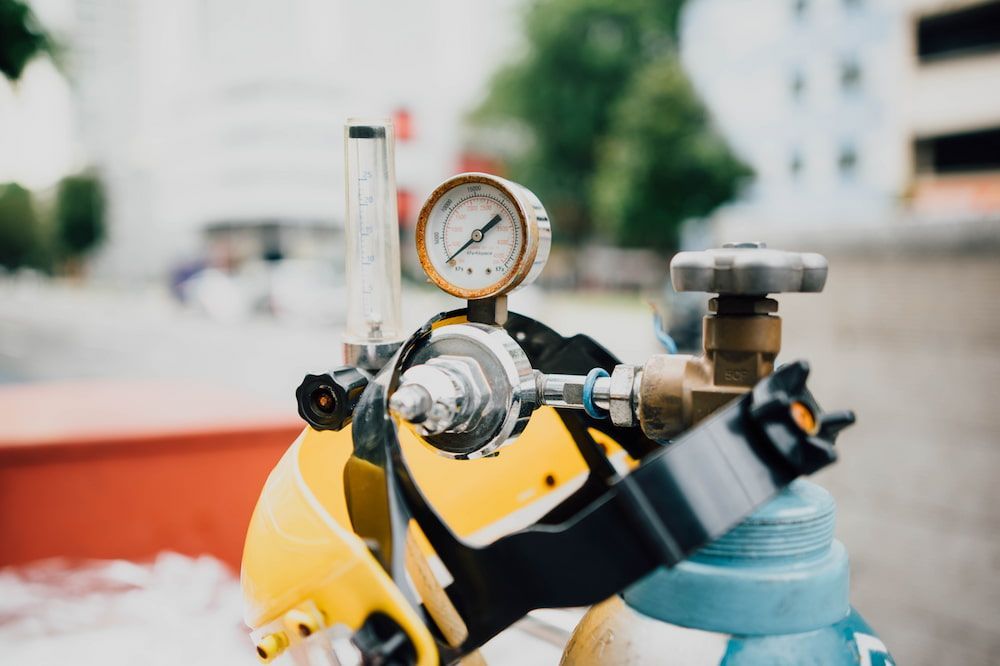This is a subtitle for your new post

The Different Types of Inert Gas Fire Suppression Fluids
When looking for vital components for your safeguarding requirements on your property, protecting your loved ones, friends, and team members is essential for every event that could occur.
Fire safety is one of those things that could happen at any time in an application with multiple hazards, and in this article, we’re going to hone in on the various types of inert gas fire suppression fluids, shedding light on their distinct attributes, applications, and advantages so that you can make informed decisions for optimal protection.
What is Meant By Inert Gas?
In regards to what is meant by an inert gas, it refers to a type of gas that doesn't easily react with other substances. The various types of inert gases are chemically stable and don't readily combust or support combustion, whether that be in the event of a fire or the welding process, for example.
The reason behind these gases not being reactive is that they have an entire complement of electrons in their outer energy level, which ensures that they’re stable and unreactive to any chemical process.
As you look closer into the details of each clean agent fire suppression fluid, you will also notice that none of them has a distinct colour or smell when released into the atmosphere, and that too is because of the valence shell (which determines how atoms react with other atoms).
The Types of Inert Gas Fire Suppression Fluids Used For Protection Systems
Anyway, enough of the scientific explanations and reality behind all of the fluids we use for fire suppression.
In this section of the blog, we’re going to discuss
each type of inert gas fire suppression fluid used in extinguishing systems so you can gain some valuable information on adding effective fire safety, minimising damage, and having an emergency response on hand at all times:
Argonite Gas
Argonite is an inert gas that uses a mixture of 50% argon and 50% nitrogen. The purpose of an argonite fire suppression system is to displace oxygen in a protected area so that it can effectively reduce the oxygen level to a level where combustion cannot be sustained.
It is one of the cleanest, non-reactive naturally occurring gases that you can implement in your fire suppression system; thus, it couldn’t be anything but an inert gas if it tried! The environmental benefits, such as no global warming potential (GWP), ozone depletion potential (ODP), little atmospheric lifetime, etc., contribute to the success of the suppression fluid.
Carbon Dioxide
Although you wouldn’t expect to see this on the list due to it not being part of the noble gas family, for fire suppression, it is still considered an inert gas due to the effective work done against flames.
Carbon dioxide, when placed in a fire suppression system, works on two of the core elements of the fire triangle by displacing oxygen and cooling the temperature of the fire. In terms of application, carbon dioxide is great for electronic systems, such as IT rooms and data centres.
Inergen Gas
Similar to argonite gas, it contains argon and nitrogen within the blend but also contains carbon dioxide. To be specific, there is 52% nitrogen, 40% argon, and 8% carbon dioxide in this inert gas.
Inergen gas works by reducing the oxygen concentration (until it falls below 15%) in the desired location, preventing the flames from spreading. This means that there will be no human intervention, and you, your staff, and sensitive equipment will be safe from any danger.
Novec 1230 Gas
Although you might know that 3M Novec 1230 is stored as a liquid within its cylinder, upon discharge, it is released as a gas through the spray nozzle. Therefore, this fluorinated ketone and impressive fire suppressant uses its cooling element in order to remove flames from the property.
Novec 1230 fluid is known for leaving no post-fire residues in the aftermath—perfectly suited for leaky enclosures—and, furthermore, has environmentally-friendly properties that, upon release, give off non-toxic gas.
FM-200 Gas
Similar to all of these inert gases, FM-200 is a non-reactive, non-flammable, colourless fluid that has been installed in many fire suppression systems in applications such as flight simulators, substations, and control rooms due to its effectiveness in interrupting the combustion process of an outburst of flames.
Perfect for class A, B, and C fires, this environmentally friendly option is safe for human consumption when evacuating the building and leaves behind no residue, minimising the downtime of your business or home when looking to get back inside.
Advantages of Using Inert Gas Fire Suppression Fluids
Although a lot of them have individual benefits that make them stand out compared to another agent, whether that be Novec 1230 vs FM-200 or Argonite vs Inergen, there are some common benefits that they all have. Let’s take a look at some of the advantages of inert gas fire extinguishing systems as a whole:
- Rapid Release Time: Although not all have them have the exact same release time—some are quicker than others—they’re all extremely quick compared to traditional extinguishing methods.
- Zero Residue: All inert gas fire suppression systems leave behind no residue, ensuring that there isn’t a cleanup process that has to take place when you go back into the property.
- Non-Flammable/Electrically Non-Conductive: All the suppression gases do not conduct electricity or cause thermal shock to sensitive components.
- Adaptable: These systems are versatile in their applications, and no matter your building, you’ll be able to find an inert system for you.
- Long-Term Storage: All inert gas cylinders are excellent for long-term storage, ensuring that you don’t have to worry about consistent maintenance.
Overall, any variation of inert gas fire suppression systems offers efficient, safe, and
environmentally friendly fire protection solutions. If you want to understand how you can install one within your workplace, MEP Fire are your nationwide suppression specialists—get in touch if you want to see how you can install an effective solution today!


